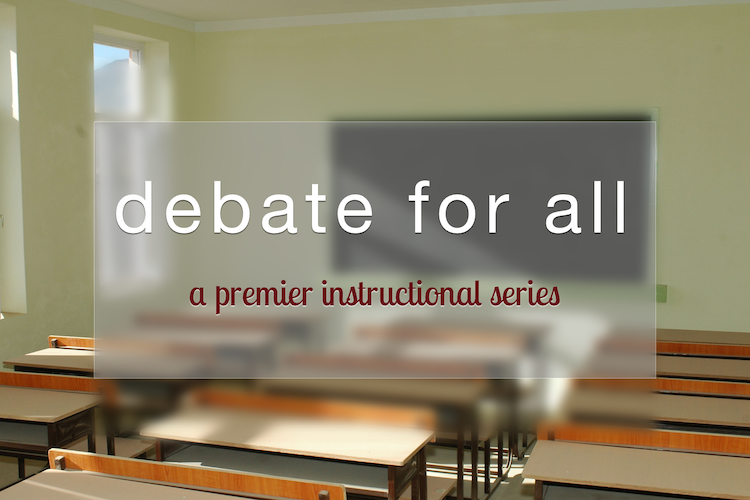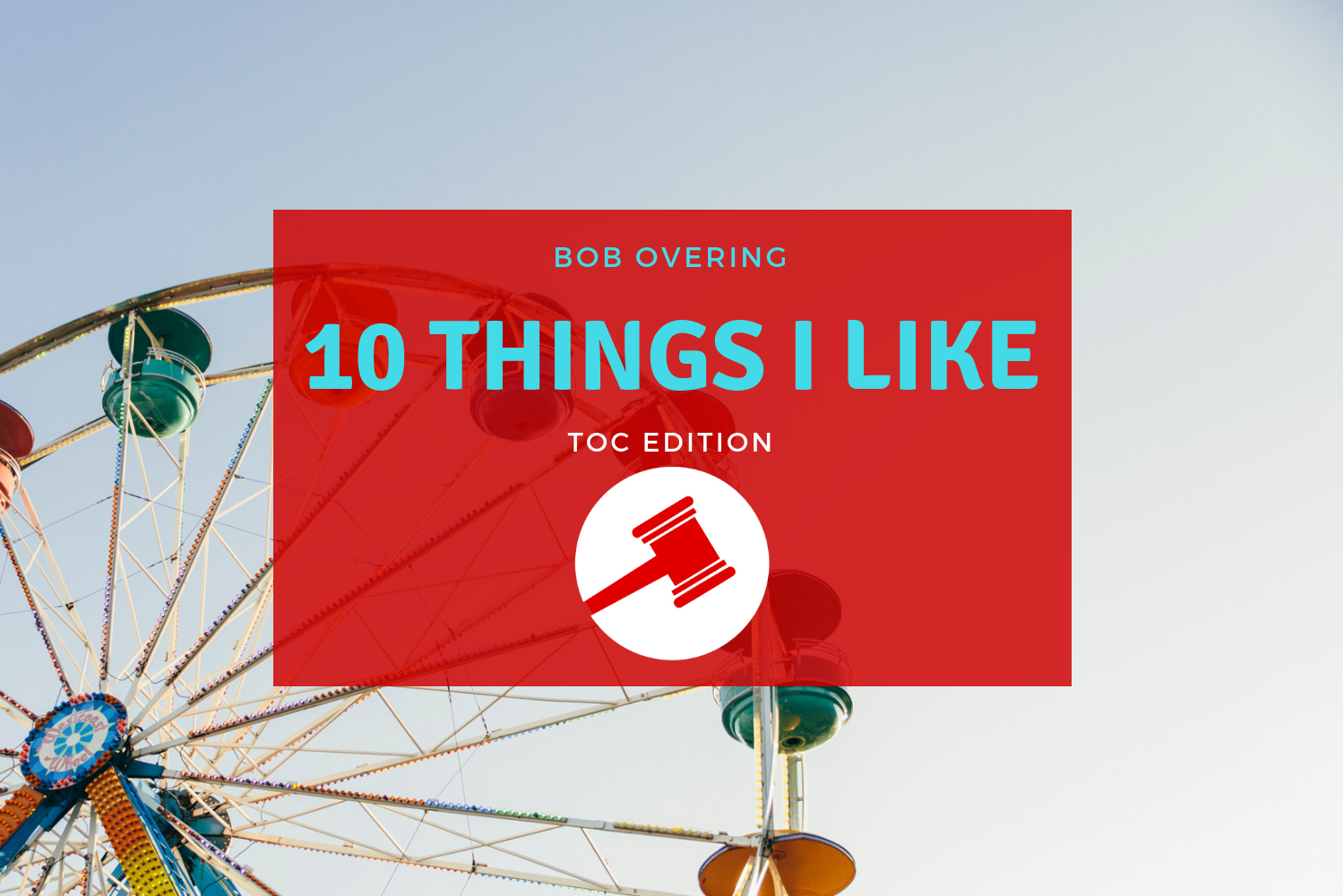Debate for All: Intro to PICs (Tess Welch)

Introduction
A Plan-Inclusive Counterplan or PIC (not to be confused with the Prison Industrial Complex) is one of the most common types of counterplans in LD. If you don’t know what a counterplan is or need a refresher, click here for that introduction. The defining feature of a PIC is that it includes a significant part of the affirmative advocacy (or plan). Generally, a PIC can be either “plan plus,” which means the aff advocacy with some additional feature, or “plan minus,” which means something subtracted from the aff advocacy. Let’s go through the four parts of a counterplan – the text, competition, solvency, and net benefits – in the context of PICs.
Parts of a PIC
Text
Be careful not to confuse a difference in advocacy with a difference in text. The fact that the text of a counterplan is slightly different than the plan doesn’t make the counterplan a PIC nor does it make it competitive. A counterplan that uses different words to describe the same action would generally be better off as a discourse kritik [1] than as a counterplan. A mere difference in text may be a form of “artificial competition,” [2] which most judges dislike. Take for example the 2017 March/April topic “Resolved: The United States ought to guarantee a right to housing.” On this topic, some debaters read a framework that criticized or denied positive rights and then read a counterplan such as “The United States ought to guarantee housing but not a right to housing.” On its face, this counterplan seems mutually exclusive since it rejects the “right to housing,” which is part of the aff. But it is not truly competitive if guaranteeing housing results in the same action as guaranteeing the right to housing. Instead, a good PIC text must describe an action or policy that differs in some way from the aff. Some PICs are phrased exactly like “do the affirmative except insert exception” whereas others are less obvious about being a PIC and recite the affirmative plan text with the exception built-in.
Competition
PICs generally have a very strong argument for mutual exclusivity, especially “plan minus” PICs. The explanation goes something like: “the PIC competes because you can’t both do the part of the aff subtracted by the PIC and not do that part of the aff.” Additionally, when an aff is a comprehensive policy on an issue, and a PIC suggests a different comprehensive policy on the same issue, it’s unclear how the perm would function. For instance, how would one perm an aff that sets the minimum wage at $15/hour and a PIC that sets it at $14? Or an aff that says the United States health care system should follow the French model and a PIC that says follow the Canadian model instead? Of course, a good PIC also competes on net benefits, showing why the part of the aff changed or subtracted is, in fact, a bad idea. This might be necessary for PICs like actor/agent PICs that change the institution that enacts the aff. It’s often hard to prove why a plan couldn’t be passed on both the state and federal level, so it’s better to run the 50 States CP as competing through net benefits.
Solvency
Solvency in PICs isn’t much different from solvency in any other counterplan. The general strategy is either to
(a) claim aff solvency works just as well, if not better, for the PIC or
(b) suggest that the part of the aff subtracted or changed by the PIC hinders solvency, so the PIC is better.
Net Benefits
Net benefits are commonly divided into “internal” and “external.” An internal net benefit is a reason why the CP or PIC is good in itself, not in comparison to the aff. An external net benefit is a reason why the aff or part of the aff is bad. In the context of PICs the majority of net benefits will be external since you need to justify why we shouldn’t do that part of the aff. The only time you’ll see a PIC with solely internal net benefits is if there is a very strong mutual exclusivity argument; in that case; the PIC can be better than the aff on its own merits and not because a particular part of the aff is actually bad. [3]
Strategy & Theory
There are many advantages and disadvantages to reading PICs. A major consideration is whether the topic readily lends itself to PICs, which can affect the availability of topic literature, their predictability, and their significance for neg ground. For example, a lot of the debate on the 2017 January/February topic [4] centered around whether or not there is a type of constitutionally protected speech that ought to be restricted. This opened the floodgates to lots of PICs that defended all constitutionally protected speech ought not be restricted on public college campuses except one type. On other topics, PICs may be strategic but hard to justify. On the 2016 January/February topic [5], common PICs defended a handgun ban except for certain groups who needed handguns. To many, the topic seemed to obviously concern the merits of a handgun ban writ large, so those PICs were pretty easy to beat with a specific 1AR theory argument.
The majority of affirmatives will say that it’s not the duty of the aff to have to defend every single part of the aff; PICs are abusive, on this view, since they shift the debate from the resolution to minor nit-picking. The common negative response is that the debate should center on the aff, not the whole resolution, so the neg has a right to contest every choice the aff made in crafting its plan or advocacy. Another prominent neg defense of PICs emphasizes their real-world applicability. While affs might say that policymakers debate overarching ideas like free universal health care, they also clearly dispute the minute details of health care statutes like the Affordable Care Act.
Conclusion
Once you know the definition of a PIC, you’ll notice that many common counterplans are actually PICs. For example, the 50 States CP says that the 50 states should do the aff instead of a federal actor. This is basically a PIC because it does the action of the aff but only changes the actor from the federal government to the state government. On the democracy promotion topic, many debaters read an actor/agent PIC arguing that United States action in the Middle East is imperialist, changing the actor to a different country, like Brazil or India. Delay counterplans (aka timeframe counterplans) are also examples of common counterplans that are technically PICs. These arguments often suggest that some beneficial legislation will pass now, but the aff stops it, and a delayed counterplan solves by waiting to do the aff until after the other bill’s passage.
PICs are a great tool for negs: they provide a unique way of approaching the resolution and can make debates more interesting than the stock positions that every debater and judge is tired of by the end of the topic.
Comment below if anything is unclear or could be elaborated on regarding the basics of plan-inclusive counterplans, and we’ll add it to an FAQ section!
End Notes
[1] These kritiks say one word or phrase in the aff is bad. On the 2016 March-April topic, “Resolved: The United States ought to promote democracy in the Middle East,” a common discourse K criticized the phrase “the Middle East” and suggested alternatives such as “the arab world” instead. Some debaters constructed the K as a PIC or “word PIC,” with counterplan texts like “Do the affirmative but without the phrase Middle East and instead use the phrase Arab World” or “The United States ought promotes democracy in the Arab World.” In this instance, the debaters could have gained a pre-fiat implication of the discourse being Eurocentric but the phrase ‘the middle east’ is also geographically incorrect – which is why many phrased it as a PIC instead of a discourse K. Some judges may like the counterplan phrasing, but since the net benefit is usually a pre-fiat argument about discourse, it probably makes more sense to read it as a kritik.
[2] Artificial competition is when one uses the words of the counterplan to exclude two worlds that are usually not competitive. This looks like the negative saying “legalize marijuana and don’t do the affirmative.” Even though legalization is not competitive with the aff, the text of the counterplan gains competition.
[3] There are two things to avoid when reading a PIC like this. First, many judges need a justification for why they exclude the part of the aff, without an external net benefit, judges may default affirmative. Secondly, make sure the internal net benefits should be in comparison to the aff, like if the aff policy helps stimulate the economy 5% but the PIC evidence says it stimulates the economy by 10%, the ten percent can be compared to the aff’s five percent to help the judge be able to resolve the debate.
[4] “Resolved: Public colleges and universities in the United States ought not restrict any constitutionally protected speech.”
[5] “Resolved: In the United States, handguns ought to be banned.”
Author
Tess Welch has been debating for three years at Cy-Fair High School in TX. She currently serves as vice president for her team and has cleared to the bid round at UT, UH, and St. Marks as well as making it to semi-finals at the Strake Jesuit Invitational, receiving a bid to the Tournament of Champions.



